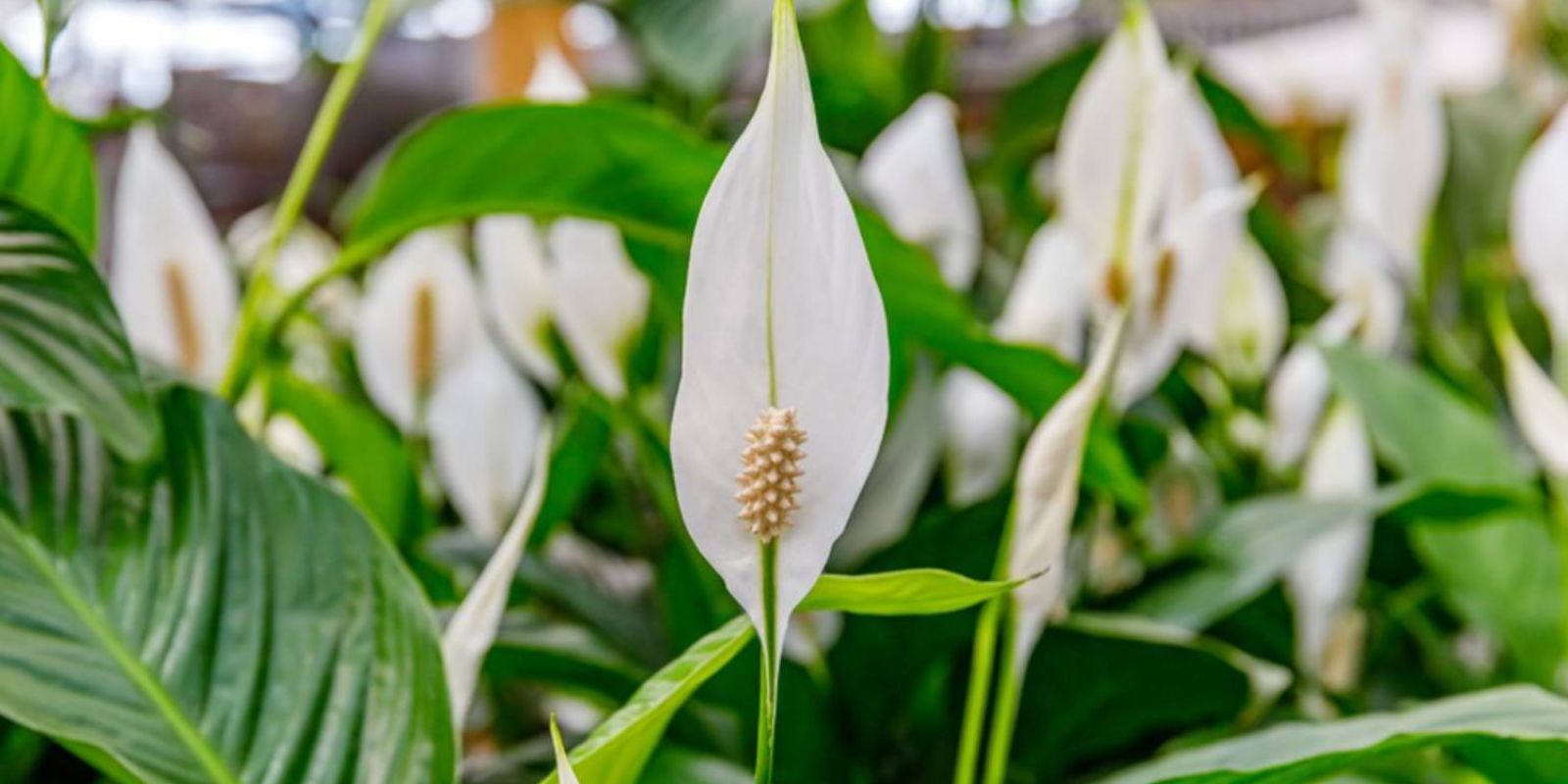Introduction
The Peace Lily (Spathiphyllum) is one of the most cherished houseplants, admired for its elegant white blooms and glossy green leaves. Its ability to thrive in low light and its air-purifying qualities make it a popular choice for indoor gardens. However, one of the most impressive aspects of the Peace Lily is its potential to bloom continuously for up to 10 years with the right care. This article will reveal essential care tips and a special ingredient that will help you keep your Peace Lily flourishing and blooming beautifully for a decade.
1. Choosing the Right Soil
Creating the Perfect Growing Medium
The health and longevity of your Peace Lily largely depend on the quality of the soil in which it’s planted. The right soil ensures proper drainage and nutrient availability, which are crucial for continuous blooming.
- Well-Draining Potting Mix: Use a potting mix that is designed for indoor plants and provides good drainage. A mix containing peat moss, perlite, and pine bark is ideal for Peace Lilies. This type of soil helps prevent root rot by allowing excess water to drain away.
- Soil Amendments: You can enhance your potting mix by adding a small amount of sand or coarse perlite to improve aeration and drainage. This helps the roots access oxygen and reduces the risk of waterlogging.
- Repotting: Repot your Peace Lily every 1-2 years or when you notice that the plant has outgrown its pot. Fresh soil provides renewed nutrients and space for healthy root growth.
Practical Tip: Ensure that the pot you use has drainage holes to prevent water from accumulating at the bottom, which can lead to root rot.
2. Providing Adequate Light
Optimizing Light for Continuous Blooming
The Peace Lily thrives in low to moderate light conditions, but providing the right amount of light is essential for encouraging blooms.
- Bright, Indirect Light: Place your Peace Lily in a spot where it receives bright, indirect light. While it can tolerate low light, more light will enhance its flowering potential. Avoid direct sunlight, which can scorch the leaves.
- Artificial Lighting: If natural light is insufficient, consider using fluorescent or LED grow lights to supplement the plant’s light requirements. Position the light source about 12-18 inches above the plant.
- Light Monitoring: Observe your Peace Lily’s growth and adjust its light conditions as needed. Yellowing leaves or lack of blooms can be a sign that it’s not receiving enough light.
Practical Tip: Rotate the plant occasionally to ensure even light exposure on all sides, promoting uniform growth and flowering.
3. Using the Special Ingredient: Fertilizer
Feeding Your Peace Lily for Optimal Blooming
Fertilizing your Peace Lily with the right ingredients is a key factor in maintaining its health and ensuring continuous blooming.
- Balanced Liquid Fertilizer: Use a balanced, water-soluble fertilizer with an equal ratio of nitrogen, phosphorus, and potassium (e.g., 10-10-10). Apply the fertilizer every 6-8 weeks during the growing season (spring and summer) to support blooming.
- Application Method: Dilute the fertilizer to half the recommended strength to avoid over-fertilization, which can harm the plant. Water the Peace Lily thoroughly before applying fertilizer to prevent root burn.
- Fertilizing Schedule: Reduce the frequency of fertilization during the fall and winter months when the plant’s growth slows down. Resume regular feeding in early spring as new growth begins.
Practical Tip: Monitor your plant for signs of nutrient deficiencies, such as pale leaves or poor flowering, and adjust your fertilization practices accordingly.
4. Maintaining Humidity
Creating a Favorable Environment for Your Peace Lily
Peace Lilies thrive in high humidity, which helps maintain their lush foliage and encourages blooming.
- Humidity Levels: Aim to keep the humidity around your Peace Lily at 50% or higher. This can be achieved by misting the plant regularly or placing a humidity tray with water and pebbles beneath it.
- Grouping Plants: Place your Peace Lily near other plants to create a microenvironment with higher humidity. Grouping plants together helps increase the overall humidity level.
- Avoid Drafts: Keep your Peace Lily away from drafts, air conditioning vents, and heating sources, as these can dry out the air and affect humidity levels.
Practical Tip: Use a hygrometer to measure the humidity levels in your home and adjust your humidity-boosting methods as needed to keep your Peace Lily happy.
5. Watering Regularly
Ensuring Proper Hydration
Consistent and appropriate watering is crucial for the health and blooming of your Peace Lily.
- Watering Schedule: Water your Peace Lily when the top inch of soil feels dry to the touch. Over-watering can lead to root rot, while under-watering can cause stress and reduced blooming.
- Water Quality: Use room-temperature water for your Peace Lily. If you’re using tap water, let it sit for 24 hours to allow chlorine to dissipate before watering the plant.
- Watering Method: Water thoroughly until you see water draining from the bottom of the pot. Ensure that excess water can escape to avoid waterlogging.
Practical Tip: Adjust your watering frequency based on seasonal changes and the plant’s growth stage. During winter, reduce watering as the plant’s growth slows down.
Conclusion
By implementing these essential care tips and incorporating the special ingredient of balanced liquid fertilizer, you can keep your Peace Lily blooming beautifully for up to 10 years. With the right soil, adequate light, proper watering, and high humidity, your Peace Lily will not only survive but thrive, providing you with years of elegant blooms and lush foliage.
Embrace these techniques and enjoy the satisfaction of maintaining a flourishing Peace Lily that will be a centerpiece of beauty in your home for years to come. 🌿🌸

